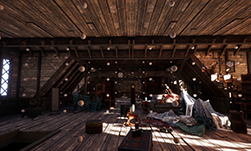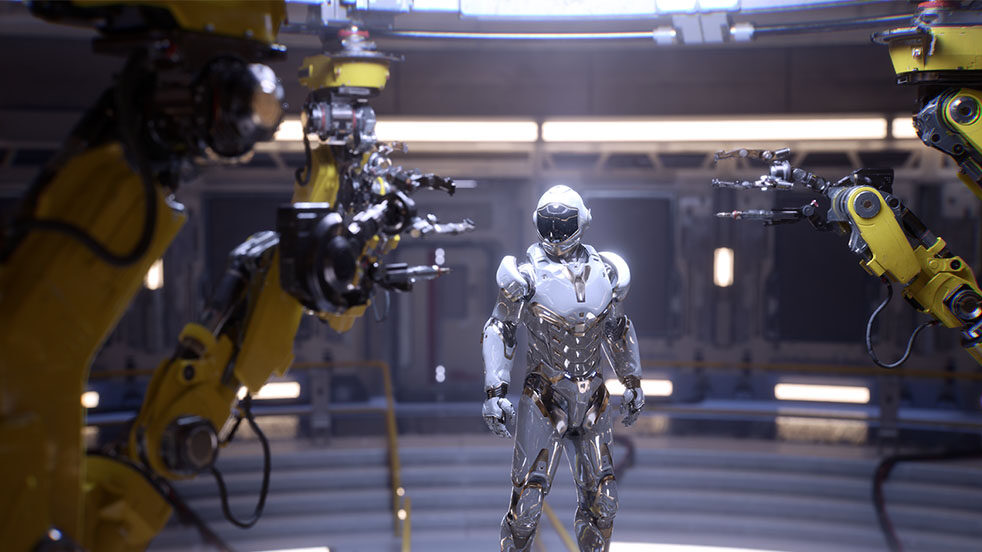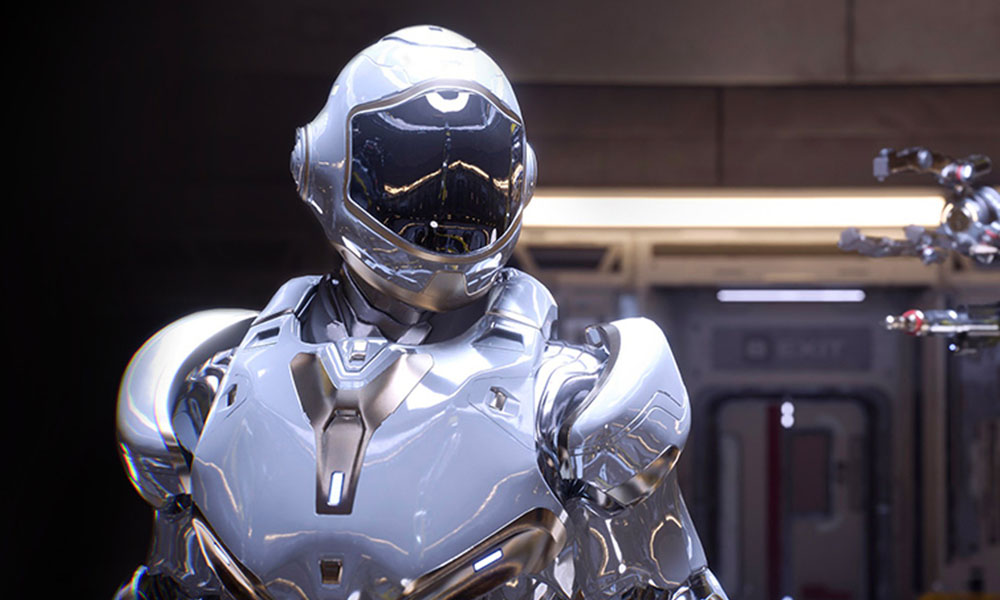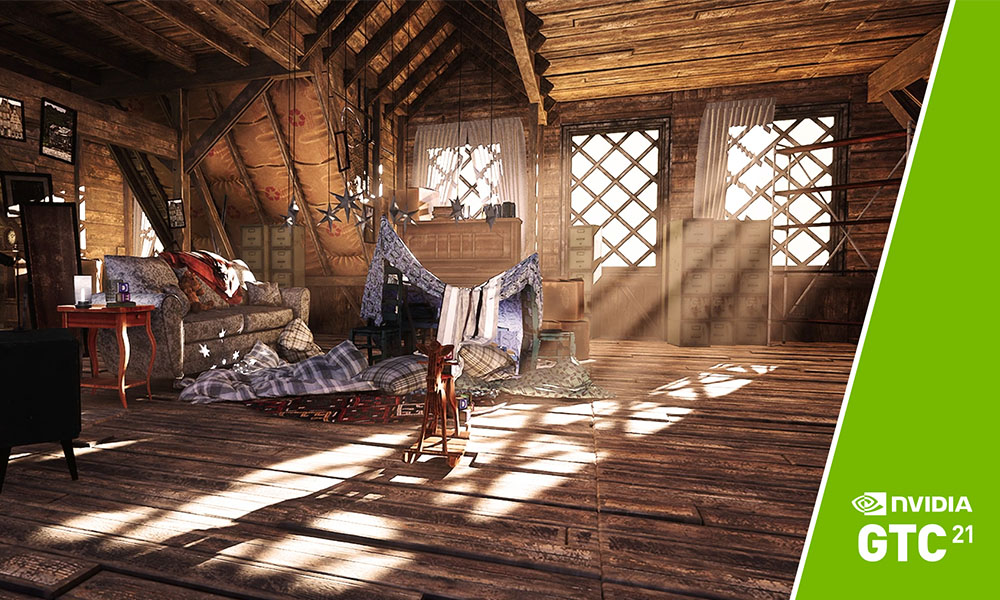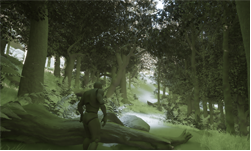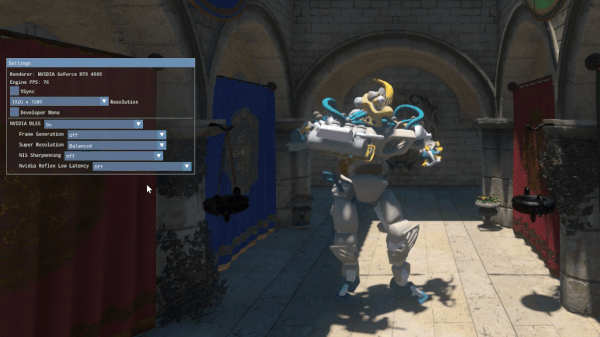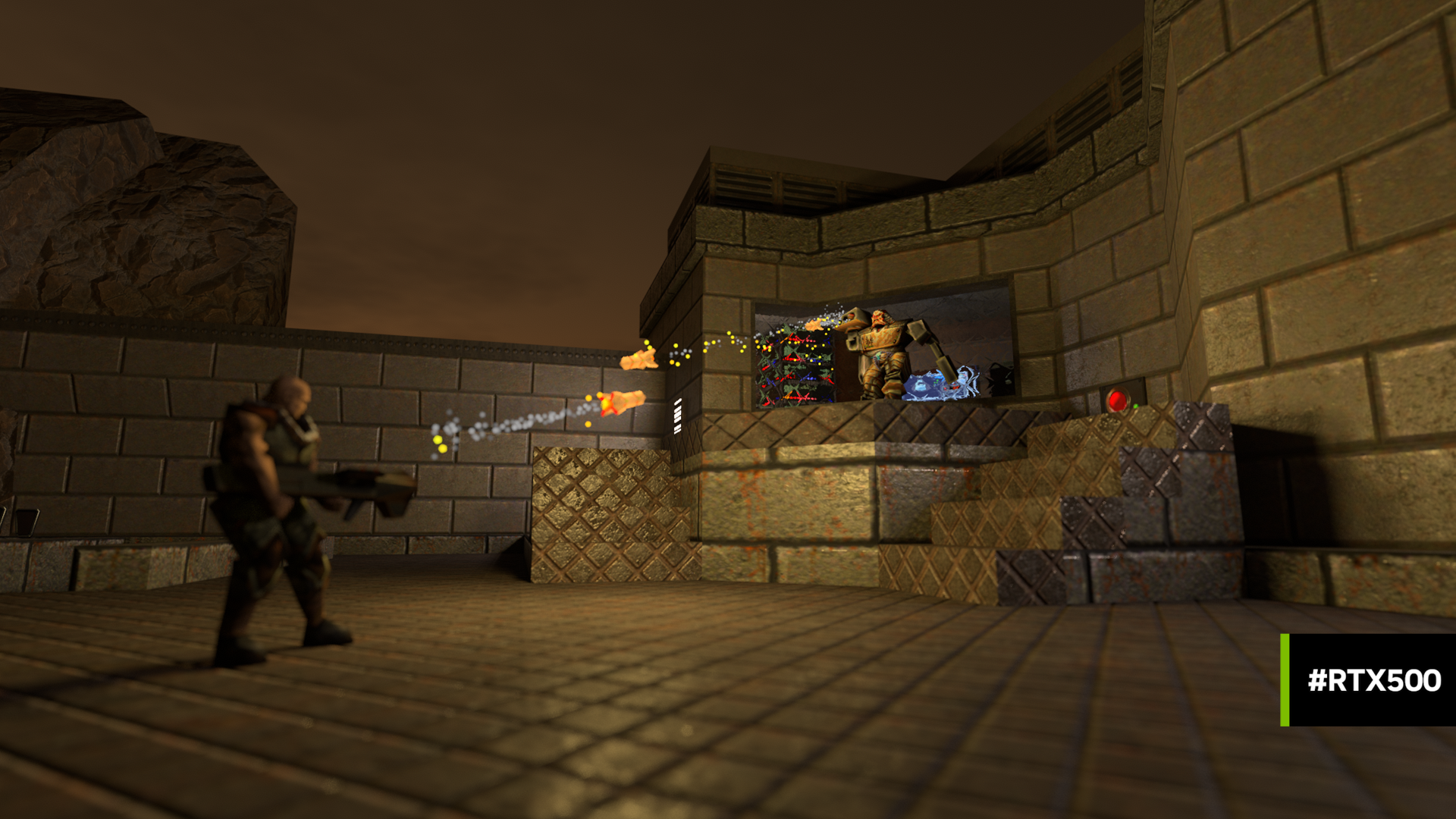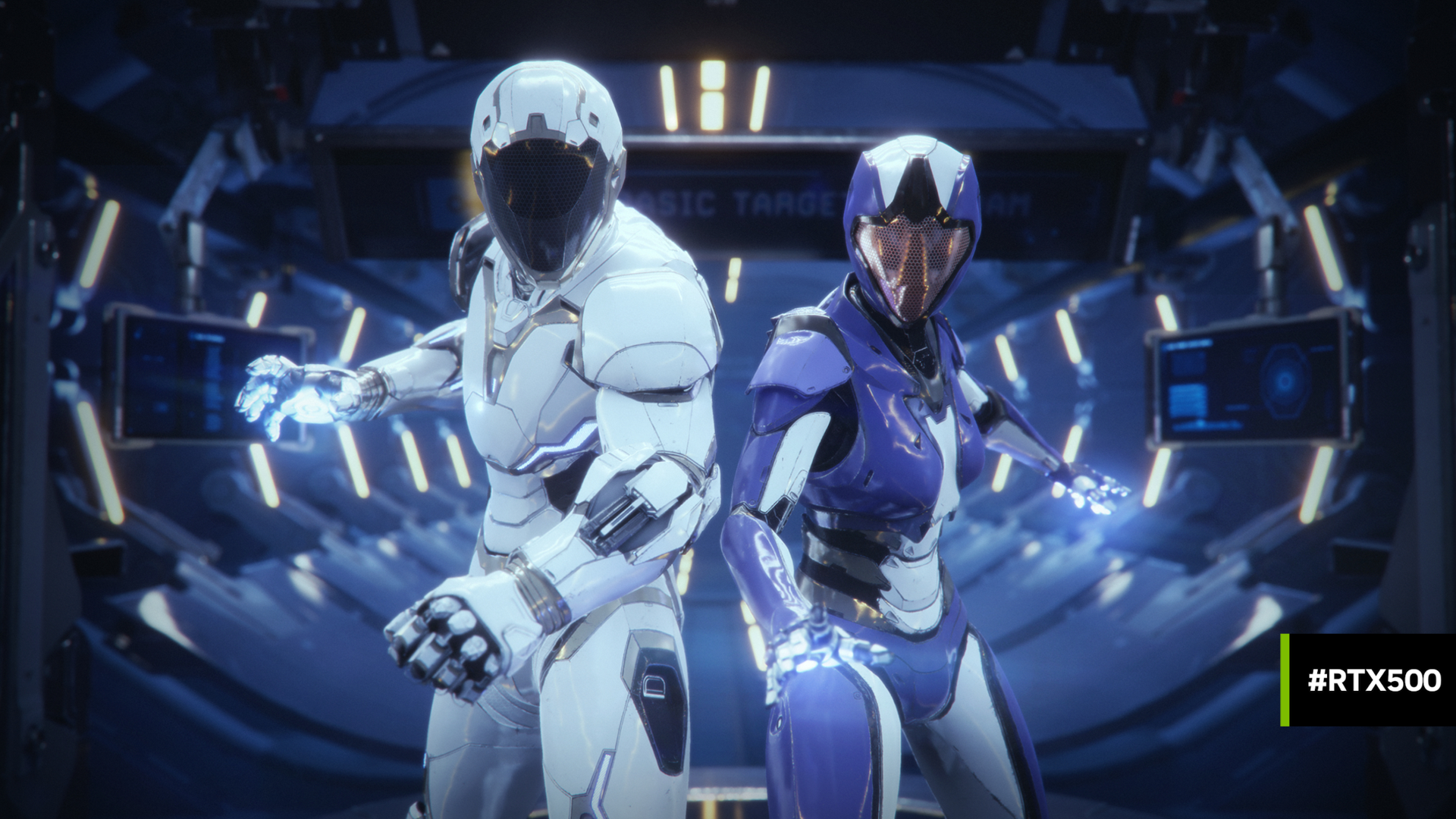Earlier this year, we released RTX Global Illumination (RTXGI) – an SDK that provides scalable solutions to compute multi-bounce global illumination in real-time with ray tracing. Today, we are pleased to announce the release of RTXGI 1.1, an updated version of the SDK with performance and image quality improvements, bug fixes, new features, and support for Unreal Engine 4.25.
With the RTXGI UE4 plugin, Unreal Engine 4 developers can now benefit from the fast, dynamic ray traced global illumination provided by RTXGI. UE4 developers can now work with infinite bounce indirect lighting in real time and dramatically speed up their content creation pipeline.
The stand-alone RTXGI 1.1 SDK and the RTXGI UE4 plugin are available now as full source distributions via GitHub. Fill out a short form to request access today.

Left: Direct lighting (default). Right: Direct lighting and multi-bounce indirect lighting with RTXGI 1.1
Improved in 1.1
Probe Relocation
Regularly spaced probe grids are not able to handle every scene without (at least) minor visual artifacts and inefficiencies. To mitigate this problem, the RTXGI SDK includes a feature that moves (or relocates) the world-space position of probes to improve their effectiveness and eliminate situations that cause visual problems. This feature was released in beta form in the previous release, and is now leaving beta as a finalized feature. The effectiveness and stability of the relocation behavior have been improved and are now production ready.
Probe Classification
By default, all probes in a volume cast new rays, update their stored values, and can be used to compute global illumination. Probe classification identifies and disables probes that don’t contribute meaningfully to the final result, saving computation and improving performance. This feature was released in beta form in the previous release, and is now leaving beta as a finalized feature. The way probes are classified has been improved, is easier to use, and can produce more effective optimizations.
New in 1.1
Multiple Volume Blending
When using RTXGI volumes in game scenes, there are situations where multiple volumes are needed. These volumes may overlap. For these situations, the SDK now provides a scheme and example of how to weigh and blend the contributions of multiple volumes for a space in the game world.
Infinite Scrolling Volumes (beta)
A common use case of RTXGI is to attach and center a single volume to a player or camera, and then update the volume as the player moves. This effectively provides an “infinite” volume of global illumination for the player without needing large amounts of memory to store an infinite number of probes. In practice though, simply moving the volume at the same rate as the player causes visual artifacts. With the new infinite scrolling volumes feature, the majority of the volume’s probes remain stationary, and only probes on the edges of the volume are shifted during player movement. By minimizing the amount of change to probes, this feature creates more stable lighting results when moving a volume.
